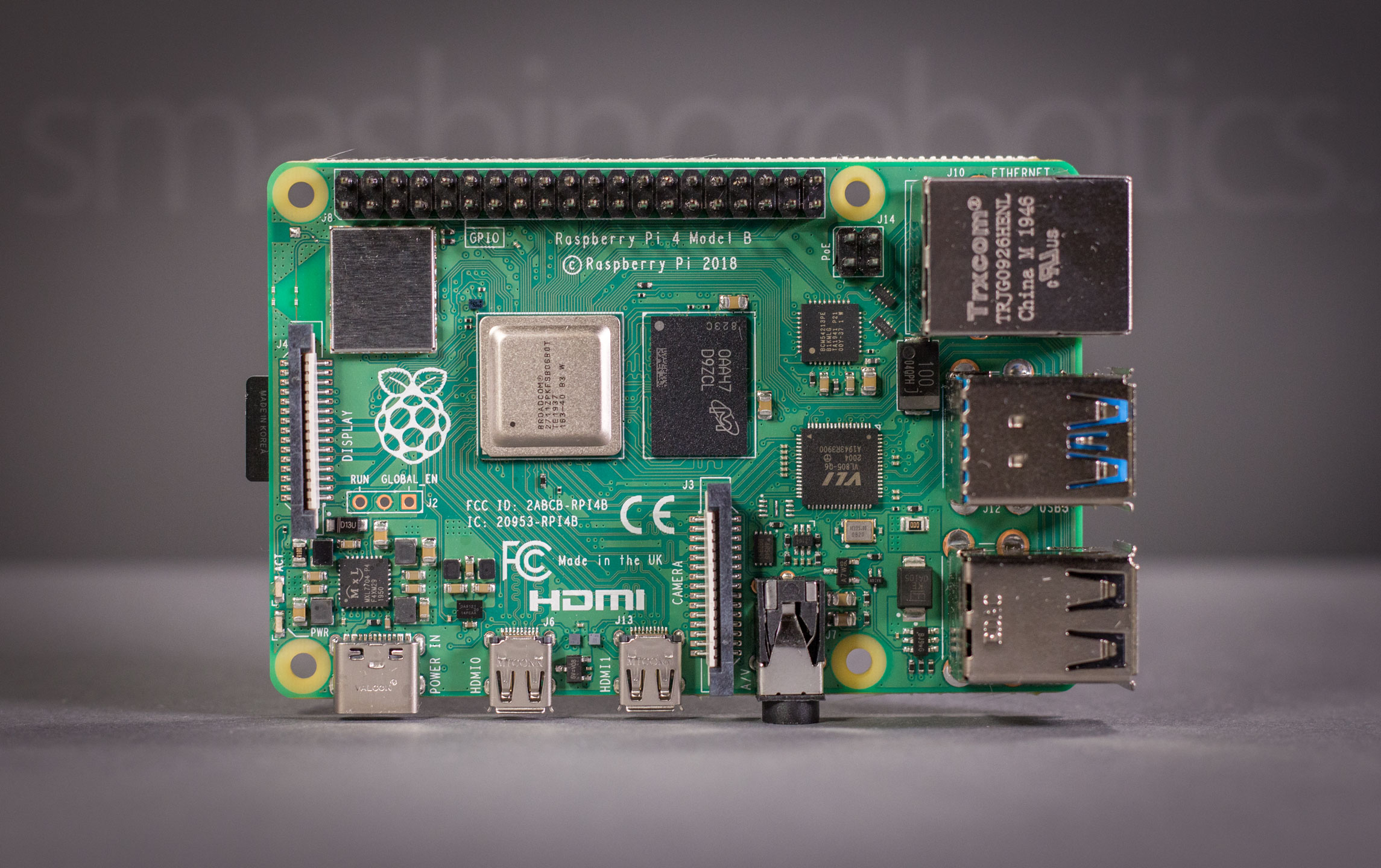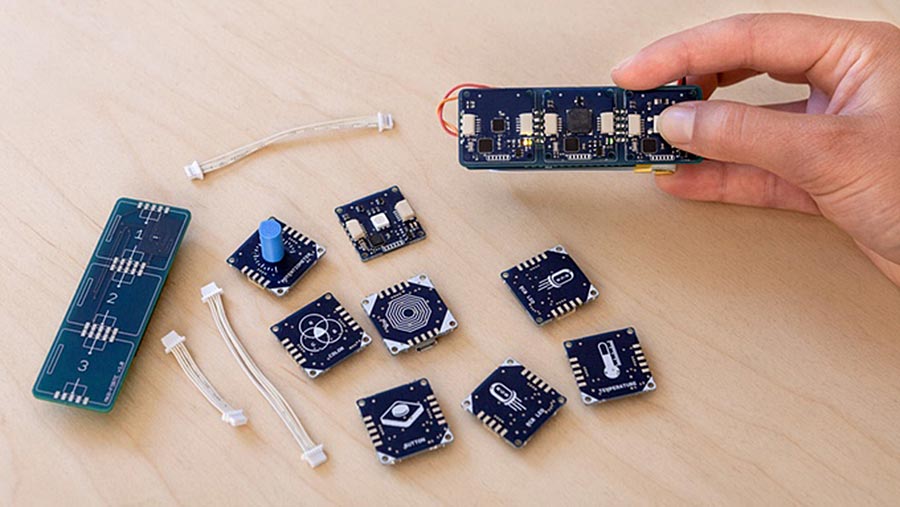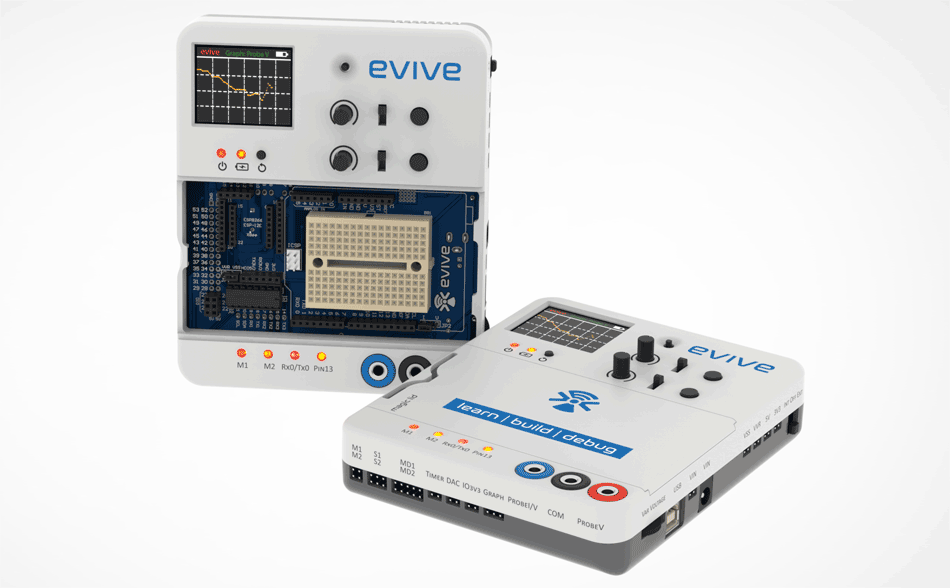As a continuation of our discussion about robotic sensors today we will talk about robotic laser rangefinder sensors, which are one of the most accurate type of distance measuring sensors, with reading errors not exceeding a few millimeters. These sensors can do distance measurements as well as speed and acceleration readings on certain objects with respect to the mobile robot. They operate by sending a pulse of light into the environment and measure the time until it is received back at the sensors, then distance is calculated. The maximum range of a laser sensor can vary from hundreds of meters to hundreds of kilometers. This very same technology is used to do measurements between celestial objects with great accuracy.
Such capabilities come at a cost, a laser sensor is very expensive so the need for such accuracy must generally be highly justifiable. In this article we will talk about some high-end laser sensors, as well as more cost-effective solutions which can be implemented in robotic applications on a tighter budget. You will notice that precision and characteristics generally vary with price, so a study about what capabilities are required for a certain project must be made in order to choose the most adequate sensor.
1. Parallax Laser Range Finder

The first laser rangefinder module we will present comes from Parallax and represents a very cost-effective alternative to pricier alternatives. In fact, at less than US$ 100 this is perhaps the cheapest sensor of this type available in stores today. The sensor is designed in collaboration with Grand Idea Studio, an American company specialized in creating innovative electronic products for the consumer market.
The sensor module is based on Parallax’s Propeller microcontroller and has an effective detection range between 15 and 122 centimeters. It features a CMOS camera and a laser diode to determine distance to the object by means of trigonometry. The sensor can be employed for distance and liquid level measurements, object detection as well as counting items when employed as such.
Features:
- Effective measurement range: 15-122 cm (6-48 in);
- Accuracy: 3% average error, less than 5% peak error;
- Maximum detection range: 240 cm (8 ft);
- Sample rate: 1 Hz;
- Power consumption: 5 VDC, 150 mA;
- Communication interface: serial, auto-detect 300-115.200 baud;
- Operating temperature: 0-50 degrees C (32-122 degrees F).
2. LightWare SF02 Laser Range Finder
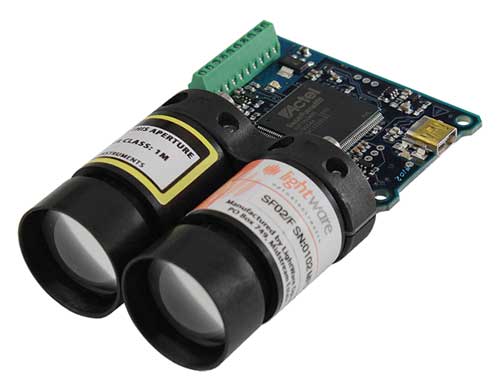
The LightWare SF02 is a long distance sensor, capable of measuring distances up to 40 meters, or 130 feet. It is suitable for both indoor and outdoor applications and has a 12 Hz output data rate, making it suitable for fast moving applications such as aerial drones. It is readily programmable with Arduino (library and examples). Its price tag is US$ 349 making it very attractive for small to medium projects.
Features:
- Measurement range and resolution: 0-40 m (0-130 feet) @ 1 cm (0.39 in);
- Accuracy: ±( 0.1 + 1%) m;
- Sample rate: 12 Hz;
- Power consumption: 6.5-9VDC or 5VDC, 150 mA;
- Communication interface: analog, digital, USB;
- Operating temperature: 0-40 degrees C (32-104 degrees F);
3. Hokuyo URG-04-LX-UG01 Scanning Laser Range Finder

The scanning range finder from Hokuyo is in a different price range, it can be bought for about 1200 US Dollars. For this you will get a very accurate and lightweight scanning laser module. It will effectively perform readings between 2 and 560 cm – yes that’s 5,6 meters – with a resolution of 1 millimeter and with an angle of view of 240 degrees with 0,36 degree resolution. The compact yet capable sensor is adequate for most mobile robotic applications.
Features:
- Effective measurement range: 2-560 cm (0,79-220 in);
- Angle of view: 240 degrees;
- Resolution: 1 mm distance, 0,36 degrees angular;
- Accuracy: 6-100 cm – 30 mm, 100-409 cm – 3%;
- Maximum detection range: 560 cm (220 in);
- Command system: SCIP 2.0;
- Power consumption: 5 VDC, 2,5 W;
- Communication interface: USB 2.0/1.1, mini-B connector;
- Weight: 160 g;
- Operating temperature: -10 – +50 degrees C (14-122 degrees F).
[yellow_box]Find out more about sensors in our article Introduction to Mobile Robot Sensor Systems[/yellow_box]
4. Hokuyo UBG-05LN Scanning Laser Range Finder
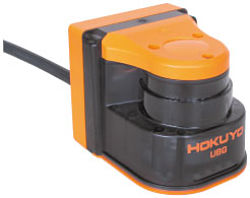
The slightly more expensive UBG-05LN range finder has a sturdier construction with its housing rated at IP64 and is designed for more heavy-duty applications. The sensor is more aimed at long distance obstacle detection, rather than environment mapping. It has 31 detection area modes and a semicircular detection range of 5 meters in length and 4 meters wide. It can be bought for about 1800 US Dollars.
Features:
- Effective measurement range: 0,1-5 m long, 4 m wide;
- Angle of view: 180 degrees;
- Accuracy: less than 1 m – 20 mm, over 1 m – 2%;
- Repeatability: less than 1 m – 10 mm, over 1 m – 2%;
- Hysteresis: 6,25%;
- Maximum detection range: 5 meters (16,4 ft);
- Power consumption: 24 VDC and 150 mA (supports between 18 and 30 VDC);
- Communication I/O: Wire connections
- Input:
- Photo-coupler input (Anode common, Each input ON current 4mA)
- Detecting area changeover
- Set area number by input leads 1-5;
- Emission-stop by getting input leads 1-5 to ON (OFF: H level input, ON: L level input);
- Output:
- Photo-coupler/open-collector output(30VDC 50mA or less)
- Output 1: OFF when detected in area
- Output 2: OFF when detected in area
- Output 3: OFF when detected in area
- Output 4(Trouble output): ON during normal operation
- Housing protection rating: IP64;
- Weight: 180 g (260 g with cable);
- Operating temperature: -10 – +50 degrees C (14-122 degrees F).
5. Loke LMC-J-0040 Series Laser Distance Measuring Devices
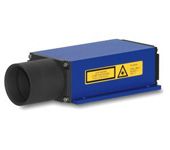
The LMC-J-0040 series sensos from the German company LOKE Engineering is an industrial grade product which can deliver astounding accuracy. The sensor can output data through various interfaces, including analog with 10 Hz frequency. Its housing is IP65 rated and there is also an option for explosion proof housings and heating or cooling systems for the device. Also there is an optional ProfiBus interface which can be added. It has a measuring range of up to 35 meters and up to 150 meters measurements are possible when used in conjuction with special reflective surfaces. Prices start at a little over 2000 US Dollars and depend on sensor features.
Features:
- Effective measurement range: 0,2-35 m (0,66-115 ft);
- Accuracy: 2-3 mm depending on conditions;
- Repeatability: 0,5 mm;
- Measure rate: 5-10 Hz;
- Maximum detection range: up to 150 m (492 ft) with special reflective surfaces;
- Power consumption: 10-30 VDC, 1,5 W;
- Communication interfaces: switchable RS232/RS422 with selectable data output, 9600 baud, analog 4-20 mA;
- Housing protection rating: IP65;
- Weight: 850 g;
- Operating temperature: -10 – +50 degrees C (14-122 degrees F).
6. Loke LMC-J-0050 Series Laser Distance Sensor

The LMC-J-0050 series sensors from Loke are industial-grade devices designed for distance measurements. They feature IP66 rated housings and multiple options such as heating or cooling systems. A dust protection system is also installed. Available communication interfaces are RS232/RS422, analog 4-20 mA, Profibus, Ethernet, WiFi, CANopen and even Bluetooth. Output rate can be up to 1000 Hz for the LMC-J-0070-1 model. For this range prices start at just about 2500 US Dollars.
Features:
- Effective measurement range: 0,2-30 m (0,66-115 ft);
- Accuracy: 2-3 mm depending on conditions;
- Repeatability: 0,5 mm;
- Measure rate: 5-10 Hz;
- Maximum detection range: up to 150 m (492 ft) with special reflective surfaces;
- Power consumption: 10-30 VDC, 1,5 W;
- Communication interfaces: RS232/RS422/RS485 with selectable data output, ProfiBus, SSI, analog 4-20 mA, Ethernet, WiFi, Bluetooth, CANopen, CAN 2.0;
- Housing protection rating: IP66;
- Weight: 4,3 kg;
- Operating temperature: -10 – +50 degrees C (14-122 degrees F);
7. Hokuyo UBG-04LX-F01 Scanning Laser Range Finder
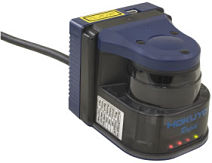
With a speed increased the URG-04LX comes with better performance and is perfect to be used with autonomous robots. It has a scanning speed around 28 ms which is making it one of the fastest laser sensors in the market. It works at a wide angle with high resolution and high accuracy. All this is available at a price just shy of 3000 US Dollars.
Features:
- Power source: 12VDC;
- Detection Range: 2 to 560 cm (White Square Kent Sheet 80mm 240°);
- Angular Resolution: 0.36°(360°/1,024 steps);
- Accuracy Nominal Range: 6 to 100 cm – 1 cm, 100 to 409 cm – 1% of distance;
- Scan Time: 28 ms/scan;
- Interfaces: USB 2.0, RS-232C (19.2k, 57.6k, 115.2k, 250k, 500k, 750kbps);
- Ambient temperature and humidity: -10 to +50 degrees C, less than 85% RH (without dew and frost);
- Impact Resistance: 196 m/s2, 10 times in X, Y and Z direction;
- Weight: 260g (with cable attachment).
8. Hokuyo UTM-30LN/30LX Scanning Laser Range Finders
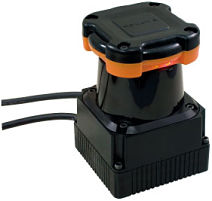
Hokuyo UTM-30LN reflective scanning laser range finder and the UTM-30LX standard scanning laser range finder are designed to be used for scanning and detecting objects at a distance of maximum 30 meters. At this range the sensors can be used for many outdoor applications. All features work with high accuracy and repeatability at a temperature between -10 to +50 degrees C. The sensors can be bought at prices around 5900 US Dollars.
Features:
- Power consumption: 12VDC, nominal 0.7 A, peak 1 A;
- Light source (for 30LX): Semiconductor laser diode(λ=905nm);
- Detection Range: 0.1 to 30 m (White Square Kent Sheet 500mm or more), Max. 60 m and 270°;
- Accuracy: 0.1 to 10 m – 3 cm, 10 to 30m – 5 cm;
- Angular Resolution: 0.25° (360°/1,440 steps);
- Scan Time: 25 ms/scan;
- Sound level: Less than 25 dB;
- Connections: Power and output – 2m flying lead wire, USB – 2 m cable with type-A connector;
- Ambient temperature and hmidity): -10 to +50 degrees C, less than 85%RH (without dew and frost);
- Impact Resistance: 196 m/s2, 10 times in X, Y and Z direction.
9. Acuity SRI500 Precision 3D Laser Scanner
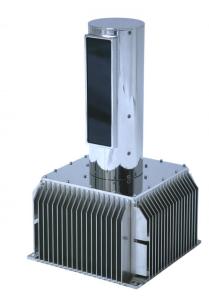
The SRI500 is the last sensor presented in this article and is one of the most performance sensors that can be used in advanced robotic applications for environment mapping, it is well-suited for self-driving cars for example. Priced at over 50.000 US Dollars, the sensor is designed to be used for obtaining data from stationary or mobile platforms at a distance of up to 152,4 meters. It can see in 3D by combining the information obtained from vertical and horizontal lines. It can be programmed to be used in one specific regions repeatedly, automatically reversing its direction.
Features:
- Scan Angles: Azimuth ± 300, Elevation ± 65;
- Scan Speed: Vertical: 500 lines/s max, Horizontal: 1000 degrees/s max;
- Range Accuracy: 2.4 cm;
- Maximum Range: 85% Reflectance Lambertian Surface 500 feet;
- Minimum Range: 5 feet;
- Laser Wavelength: 905 nm;
- Average Laser Power: < 1 mW;
- Laser Interlock: Vertical scan mirror encoder;
- Laser Spot Divergence: 2 millirad H × 0.5 millirad V;
- Optical Aperture: 2” × 8.5”;
- Scan Motors: Long life brushless DC;
- Power: 50-500 W (scan pattern dependent) at 12-28 VDC.
Photo credits Hokuyo, Loke, Acuity, Parallax and LightWare.


